Mozambique: 2024 series banknote, coin production cost €46.9M - central bank
Mozambique: G7 OKs gas, SADC delays decision, secret debt bill is $11 bn – By Joseph Hanlon
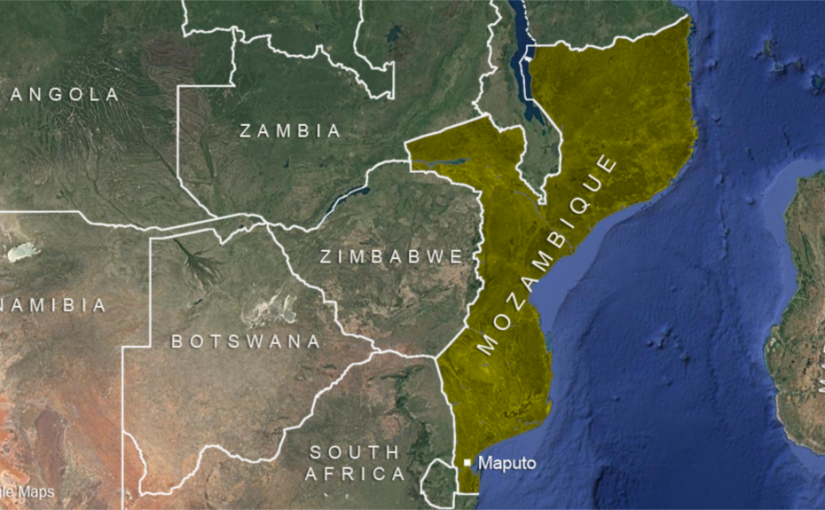
In this issue:
The war
- Excellent NYTimes documentary
- UN confirms no access to 4½ districts
- FDS special units moving on key roads
- SADC delays decision on sending troops
Gas
- G7 gives OK for Mozambique gas
- Growing pressure on gas companies
Secret debt
- $11 bn bill for $2 bn secret debt
- But Frelimo won the diplomatic war
- NYTimes documentary shows FDS failed to confront insurgents or protect civilians in Palma
An excellent New York Times video documentary posted yesterday (26 May) uses survivors interviews, videos, satellite imagery and ship-tracking data to show how Mozambique’s defence forces (FDS) government failed to protect civilians, leaving thousands to fend for themselves.
There were 750 trained troops inside the Total Afungi compound and they did not leave or participate in the fight. Three 30 passenger helicopters are shown sitting on the Afungi air strip. They once tried fly over Palma and was shot at, so they retreated and were never used again. So it was left to DAG to evacuate some people from the Amarula Hotel in their 4 seat helicopter (with machine gun), which was also used to provide cover for helicopter rescuing the Amarula manager and her two large dogs. That helicopter was from Everett Aviation, which normally flies guests on sight seeing trips.
Militants Attacked a Key Town in Mozambique. Where Was the Government? New York Times 26 May https://nyti.ms/3uj2KKV
- UN confirms no access to 4½ districts
The latest access map published on 25 May by the UN humanitarian agency OCHA shows all of four districts as inaccessible (and thus, in effect, insurgent controlled): Palma, Mocimboa da Praia, Muidumbe, and Qissanga. But parts of Nangade and Macomia are accessible.
On the map below, dark blue zones are “hard-to-reach” and light blue is “partially accessible”. For roads, red is “not accessible”, orange is “partially accessible” (which includes unpaved roads outside the war zone), and green is “accessible”. The map shows it is now possible to go from Pemba north on the N380 on an accessible road to the Bilibiza turn off, and on a partially accessible road to Macomia town, which itself is in government hands. But the entire coastal area from Ibo north is not accessible.
The black and red dots are security incidents in April. The pink and grey ones are earlier incidents. A red H is a closed health post.
The full map is on https://bit.ly/Moz-OCHA-Access-Apr21 with a complete key.
- FDS special units moving to retake key roads
The entry of properly trained and equipped counter-terrorism units into the fighting in Cabo Delgado province seems to be yielding results, report Mediafax and Zitamar (24, 25 26 May). They are trying to reopen three key roads east from Mueda (see map above).
For the past year, the defence forces (FDS – army and riot police) repeatedly promised they would retake Mocimboa da Praia town and port. This would be done by reopening the 100 km road from Mueda to Mocimboa, which is held by insurgents (and shown in red on the map). Backed by Gazelle assault helicopters, the new units have retaken Diaca administrative post, 40 km east of Mueda. This is, however, only the first step. Awasse, 12 km further east and at a key road junction, has been fortified by the insurgents.
The government would like to retake Awasse because it contains a major electricity transformer destroyed by insurgents some months ago, meaning there has been no electricity except from local generators in Palma, Nangade and Mueda districts for some time, as technicians cannot reach the transformer station to make repairs.
The second key road is the winding dirt road from Mueda to Palma via Nangade. As the map shows, the 100 km from Nangade to Palma is inaccessible and subject to insurgent attack. But the new units attacked a 30-strong insurgent camp in Pundanhar. Five insurgents escaped, but MediaFax reports that were subsequently killed by local people.
The third key road is southeast from Mueda through Muidumbe district, a centre of heavy fighting, toward Macomia. 30 km southeast of Mueda on the main road is Namakande, which is the district town of Muidumbe. It was first taken by insurgents in November 2020, retaken by the FDS, and retaken by insurgents, and with air support recaptured by FDS on 23 May.
The special units also recaptured two villages, Nangunde and Nchinga, north of Namakande. Some insurgents were captured, and they are young men from nearby villages who voluntarily joined the insurgents. (MediaFax 25 May)
- SADC delays decision on troops
The SADC summit met today (27 May) in Maputo and postponed any discussion of the proposal to send 3000 troops until another summit on 20 June.
Two opposing views on sending SADC troops to Mozambique: A SAPES seminar today with Southern African scholars speaking forcefully that the first thing to do is resolve the grievance and lack of development. Sending in troops is putting a plaster on a festering wound. https://www.facebook.com/sapestrust/videos/1076962609494070 On the other side, Francois Vreÿ of Stellenbosch University, argued yesterday that “Delay in sending regional forces to Mozambique could exact a high price.” http://bit.ly/Moz-Vrey
- Other war news
Small boats along the coast continue to be attacked by insurgents, largely it appears to steal fish and money. But in one case, eight insurgents who attacked a boat carrying refugees from Palma were killed by the refugees defending the boat. (MediaFax 26 May)
Insurgents killed five of their own members after a failed attack on the village of Olumbe, Palma district, on 21 May, President Filipe Nyusi told the Frelimo Central Committee meeting on 22 May. (Lusa 22 May, AIM 24 May )
Fighting in Palma killed at least nine people last weekend (Lusa 26 May). A group of insurgents entered the town Saturday (22 May) night and burned 14 houses and a mosque. As they were leaving on the road north toward Quionga, they met an FDS group and there was a battle, with insurgents and civilians killed.
“Deviant behaviour”, not lack of jobs, is behind the war, Cabo Delgado governor Valygi Tuabo told a meeting in Ancuabe Wednesday (26 May). “The trend in our province is one of growth, of acceleration, of more employment, of more hope.” (Radio Mocambique 26 May)
- G7 gives OK for Mozambique gas and cyclones for its children
The G7 on 21 May effectively said that Cabo Delgado gas could be developed, just three days after the OECD’s International Energy Agency (IEA) said it should not be. In rejecting the IEA, the G7 sided with energy companies and Mozambique’s elite who will earn billions of dollars. The price will be paid by Mozambicans who will suffer more intense cyclones and devastating droughts.
Climate scientists agree that global heating must be limited to 1.5ºC above pre-industrial levels to prevent major damage by climate change. To meet 1.5º, fossil fuel consumption would have to be cut rapidly, and natural gas use would peak in 2025 and then fall quickly. The IEA report said that to meet the 1.5º target the cuts are so large that “no new oil and natural gas fields are needed”. This means that “beyond projects already committed as of 2021, there are no new oil and gas fields approved for development.”
In Mozambique, gas companies have only “committed” to exploit 20% of the Cabo Delgado gas field and under the IAE interpretation the other 80% would never be exploited because there would be no market. But the G7 leaves the door wide open for export credits to the gas companies to exploit the whole gas field.
The question is about market. The gas companies all use a target for global heating of 2ºC. That seemingly tiny difference makes a huge difference in the market. At 1.5º, gas consumption will soon peak, and Cabo Delgado gas has no market. At 2º there can be a gas boom, with consumption rising until 2035, and thus a possible market for more of Mozambique’s gas
In their 21 May statement the G7 ministers responsible for climate and environment failed to commit to 1.5º, but only promised “to keep a limit of 1.5°C temperature rise within reach.” They imposed no restrictions on fossil fuels, only agreed “to take concrete steps” in 2021 towards ending aid, export finance, and trade promotion for unabated thermal coal power generation.
All studies show that if fossil fuel consumptions continues to rise for the next decade, it will require massive cuts after 2035. By promising is to keep 1.5º “within reach”, G7 ministers have said that current ministers, energy company CEOs and hedge funds can continue to reap huge personal returns in the next decade, and it will be up to their successors and children to find the technology to prevent global heating.
The G7 ministers have put their faith in technofixes – carbon pricing and markets, clean coal, carbon capture, super-efficient energy use – and more trees. The technology does not exist so the G7 agrees to “incentivise private sector investment to fast-track innovations.”
Keeping the 1.5º limit “within reach” means that by 2035 all these unknown technologies must be in use, and if they are not, fossil fuel use will have to drop precipitously, rather than relatively gradually if cuts start now. So the G7 leaders leave the problem for their children.
In Mozambique the climate emergency is already real. There were two record breaking cyclones in 2019, made more intense by the warming of water in the Mozambique Channel. Droughts in the south of Mozambique are causing water shortages in the capital, Maputo, and hitting farming. This is exactly what is predicted by very detailed modelling of the IPPC (Intergovernmental Panel on Climate Change).
- Dutch court ruling highlights growing pressure on gas companies
A court in the Hague has ordered Royal Dutch Shell to cut its global carbon emissions by 45% by the end of 2030 compared with 2019 levels. The Anglo-Dutch company was told it had a duty of care and that the level of emission reductions of Shell and its suppliers and buyers should be brought into line with the Paris climate agreement.
Judge Larisa Alwin said Shell must “at once” reduce its CO2 output, adding that the ruling would have “far-reaching consequences” for the company and may “curb the potential growth of the Shell group”. She added that “The interest served with the reduction obligation outweighs the Shell group’s commercial interests.” (Guardian 27 May)
The case was brought by Friends of the Earth (Milieudefensie) and over 17,000 individuals. Shell will appeal. But the decision is groundbreaking because Judge Alwin took into account a very wide range of legislation – the Paris Accord, which is legally binding, and human rights legislation in the EU and the Netherlands.
Meanwhile on 22 April 2021 Friends of the Earth (FoE) was given permission by the High Court in London to bring a case against the UK government to try to stop the $1.2 bn export credit for the Total gas project in Mozambique. FoE is challenging the credit on the grounds of increased greenhouse gas emissions.
Both companies leading the Cabo Delgado gas projects are under shareholder pressure this week. At ExxonMobil dissident shareholders led by a hedge fund Engine No 1, with the backing of the three biggest US pension funds, on Wednesday (26 May) successfully replaced two Exxon board members with their own candidates pushing for a greener strategy – a totally unprecedented action. The Washington Post (27 May) called it a “resounding defeat for chief executive Darren Woods”, noting that “both sides spent tens of millions of dollars on the hard-fought campaign, an indication of the high stakes involved.” The newspaper added that “one of the ardent supporters of the Engine No. 1 slate said the hedge fund found eager supporters because of the widening realization that climate change is a financial issue.”
And Total at its shareholders meeting tomorrow (28 May) had been forced to present a “strategy for the transition to net zero” carbon, which will stress carbon capture and storage, as well as a move from oil to gas (which favours the Cabo Delgado development). Some shareholders, including 11 European asset managers have said they will vote against the plan as not doing enough.
The Post also notes that “Chevron investors also flexed their muscle Wednesday, casting 61% of shares in favor of a proposal asking the oil major to cut its total greenhouse gas emissions, including customers’ emissions.”
Comment: The establishment mood is changing. Establishment figures and institutions – the OECD’s IEA, judges, hedge and investment funds – are becoming a critical mass, and saying the cost of climate damage is now higher than the profits. Mozambique’s two gas majors, Total and ExxonMobil, are still pushing hard for gas, but will not make a final decision to go ahead in Cabo Delgado for two years. Only then will they see which way the wind is blowing – will there be a market and will the courts and shareholders allow it? jh
- $11 bn bill for $2 bn secret debt
Covering up the secret debt and lying about it had a more catastrophic impact than the corrupt $ 2 bn loan itself. Little of the debt has yet been repaid but the economic impact has been $11 bn, with 2 million people pushed into poverty, according to a study published today (27 May) by the Centro de Integridade Pública (CIP) and Chr. Michelsen Institute, “Costs and consequences of the hidden debt scandal of Mozambique”. In addition, it estimates that Mozambique will have to pay a further $4 bn on the debt, with repayments, penalties and interest. The full report, in English, is on http://bit.ly/Moz-CIP-DebtCosts
The loan itself was bad enough. Not one penny went directly to Mozambique. The only cash was bribes paid to the Frelimo elite and their friends and fixers. And Mozambique received overpriced and useless boats and equipment. It proved hard to keep a corrupt $2 bn loan secret, but Mozambique’s leaders tried to keep the lid on. When rumours began to circulate, Mozambican ministers lied to the IMF and ambassadors of Mozambique’s development partners, denying the existence of any loans.
When the Wall Street Journal revealed the hidden debt in April 2016, the anger was huge and personal. Donors and lenders had kept the country afloat, and they pulled the plug. The IMF halted its programme and donors cancelled direct budget support and other aid to the government – a reduction of $831 million in 2016 compared to the year before. The cascade that followed included a fiscal crisis making the government unable to pay its bills. There was a major currency devaluation, foreign debt became unpayable, the economy slowed down sharply, real GDP per capita fell, unemployment soared, and poverty increased. Education spending fell from $44 per person per year during 2013-5 to $30 per person per year during 2016-8. Health spending fell proportionately more, from $23 to $13.
The impact was immediate and huge. From 2014 to 2016, capital expenditure halved, and public sector debt doubled. Inflation jumped ten-fold, from 2.5% to 25.3%. There was a rapid devaluation, with the value of the Metical dropping from $1 = 30 Mt in 2014 to $1 = 76 MT in 2016. Imports fell from $8000 mn to $4700 mn. Foreign direct investment fell from $5000 mn to $3000 mn.
All this had a direct impact on poverty. Despite important progress made after independence, and particularly after the peace in 1992, Mozambique remains one of the least developed countries in the world. In 2020, the United Nations Development Programme (UNDP) ranked Mozambique at number 181 out of 189 countries in its Human Development Index (HDI).
Because of the lack of rural development, the number of poor people has been rising, from 9.7 million in 2003 to 11.8 million in 2015. The CIP report estimates that by 2019, there were 16.2 million poor people in Mozambique. Of the 4.4 million extra poor people (measured by consumption poverty), 1.9 million people had become poor due to the secret debt.
The report notes that there were negative trends in global indicators of Mozambique from 2010, but there was a huge deterioration around 2016. The Mo Ibrahim governance indicator deteriorated sharply between 2013 and 2017. All six groups of World Bank governance indicators declined. In 2018 the Economist Intelligence Unit declared Mozambique an “authoritarian” regime.
Comment: But Frelimo won the diplomatic war
The political impact of the exposure of the debt was unexpected and huge. In trying to keep the debt secret, Mozambican ministers lied directly to IMF head Christine Lagarde and to ambassadors and donor heads. The most grievous sin is to lie to the IMF, and Lagarde was personally offended and took a personal interest in punishing Frelimo. Ambassadors also felt personally affronted – and they gave angry newspaper interviews. Their response to cut aid was rapid, angry, personal and, perhaps, not well considered.
As often happens with sanctions, they hit ordinary people hard, but the ruling elite survived and became more powerful.
By not paying bills, increased borrowing, and sharply cutting spending on infrastructure and social services, the government survived the crisis. But the donors lost their main power, which was money. This came just at the time that gas was becoming a reality, and suddenly foreign governments saw millions of dollars in potential investments. Like the Frelimo elite, many countries were dazzled by the prospect of $100 bn in gas investments. Natural turnover meant that ambassadors who were personally offended by being lied to were replaced by ambassadors told their priority was to gain investments in Mozambique, and that they should not criticise Frelimo or give newspaper interviews.
This was clear after the 1999 election, when the European Union observer report harshly criticised the blatant inflation of the votes for President Nyusi, but not one ambassador publicly criticised the election and all congratulated President Nyusi.
At first the lenders were divided. The World Bank kept its head down and increased lending. The IMF led the aid cut because Christine Lagarde was personally offended. But when she left the IMF in 2019, it soon found ways to support Frelimo and Mozambique.
In the stand-off, the donors and lenders blinked first and backed down. The huge redistribution from poor to rich was not important. Gas and investment mattered more than corruption and poverty. Frelimo won.
By Joseph Hanlon







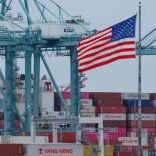
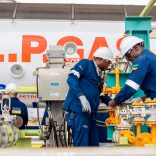

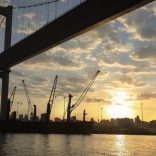
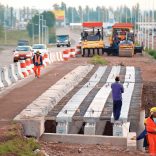
Leave a Reply
Be the First to Comment!
You must be logged in to post a comment.
You must be logged in to post a comment.